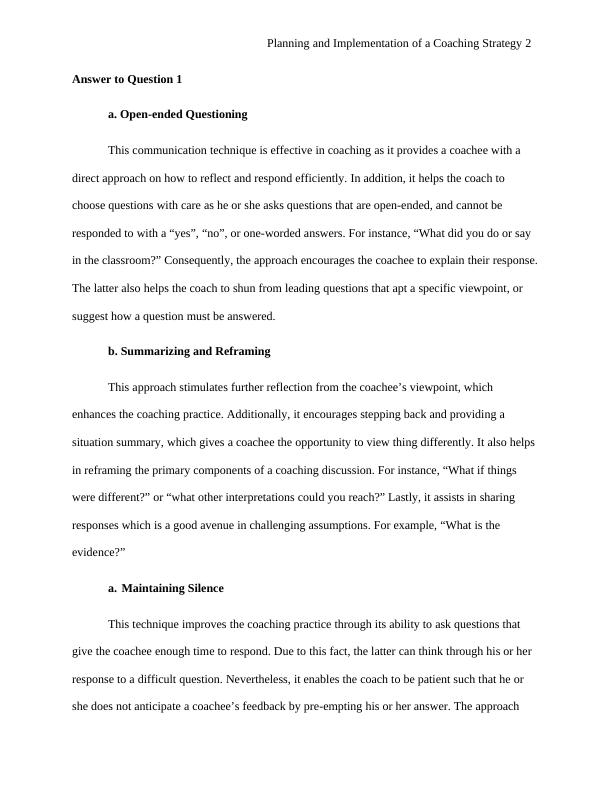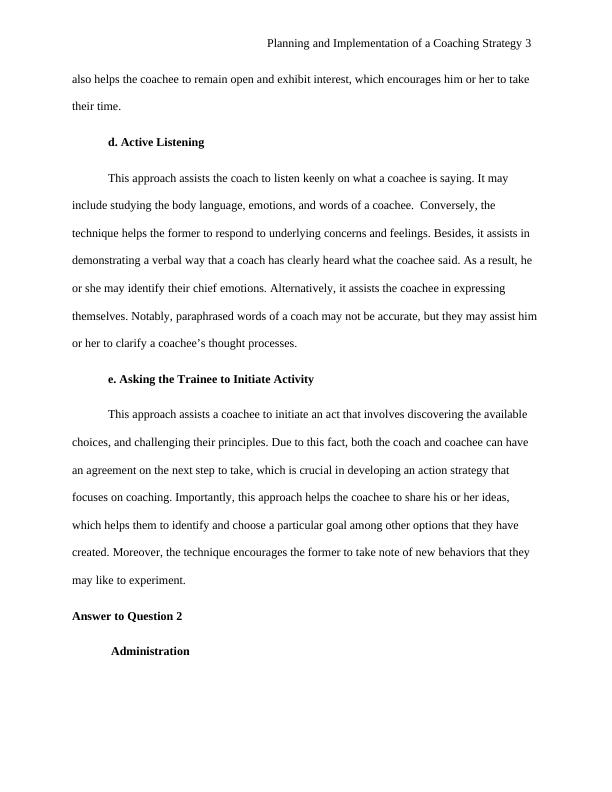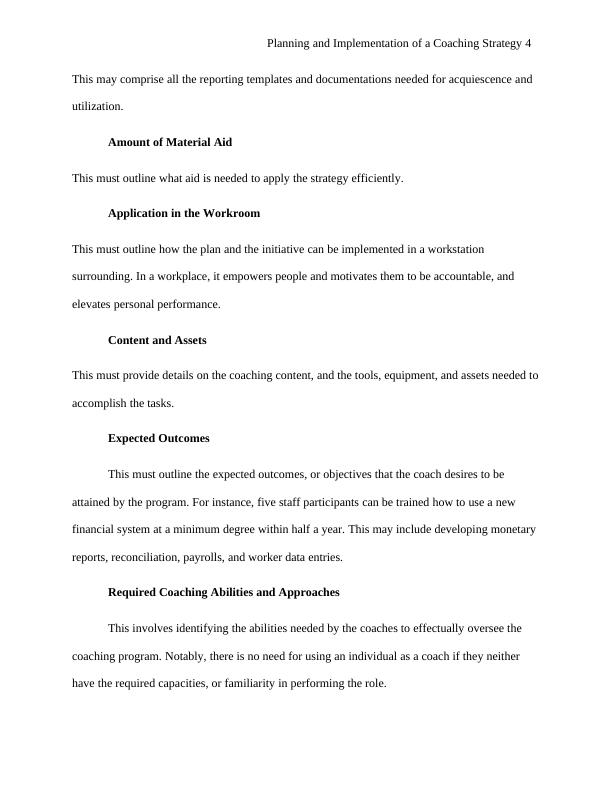Planning and Implementation of a Coaching Strategy
Determining the key factors of an efficient coaching program and exploring the effectiveness of coaching sessions and programs.
20 Pages4831 Words56 Views
Added on 2022-12-18
About This Document
This document discusses the planning and implementation of a coaching strategy, including communication techniques, coaching models, and matching criteria for coaches and coachees. It covers topics such as open-ended questioning, summarizing and reframing, maintaining silence, active listening, and asking the trainee to initiate activity. It also explores coaching models such as GROW, CLEAR, and OSKAR, and provides insights on creating an effective coaching program. Additionally, it discusses different coaching approaches, such as face-to-face coaching and virtual coaching, and individual coaching and group coaching. Lastly, it highlights the importance of rapport, confidence, confidentiality, emotional intelligence, commonality, compatibility, credibility, and reliability in the coaching process.
Planning and Implementation of a Coaching Strategy
Determining the key factors of an efficient coaching program and exploring the effectiveness of coaching sessions and programs.
Added on 2022-12-18
ShareRelated Documents
End of preview
Want to access all the pages? Upload your documents or become a member.
Conflict Resolution
|8
|2280
|49
Active listening is an interpersonal communication
|6
|1201
|16
Early Childhood Education- Classroom
|5
|1038
|17
Communication Techniques - Assignment
|5
|1204
|33
The field of cognitive development
|5
|715
|17
Psychology and Law Question Answer 2022
|4
|676
|19




